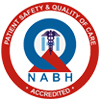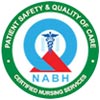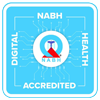
Epilepsy: Causes, Symptoms, Diagnosis And Treatment
August 22, 2023
What Is Epilepsy?
Epilepsy is a long-term (chronic) disease that causes repeated seizures due to abnormal electrical signals produced by damaged brain cells. A burst of uncontrolled electrical activity within brain cells causes a seizure. Seizures can include changes to your awareness, muscle control (your muscles may twitch or jerk), sensations, emotions and behavior. Epilepsy is also called a seizure disorder.Who Does Epilepsy Affect?
Anyone, of any age, race or sex, can develop epilepsy.What Happens In Your Brain When You Have Epilepsy?
The cells in your brain send messages to and receive messages from all areas of your body. These messages are transmitted via a continuous electrical impulse that travels from cell to cell. Epilepsy disrupts this rhythmic electrical impulse pattern. Instead, there are bursts of electrical energy — like an unpredictable lightning storm — between cells in one or more areas of your brain. This electrical disruption causes changes in your awareness (including loss of consciousness), sensations, emotions and muscle movements.What Are The Types Of Epilepsies And Their Seizure Symptoms?
Healthcare providers classify epilepsies by their seizure type. Seizure categories are based on where they start in your brain, your level of awareness during a seizure and by presence or absence of muscle movements. There are two major seizure groups: Focal onset seizures Focal onset seizures start in one area, or network of cells, on one side of your brain. This seizure used to be called partial onset seizure. There are two types of focal seizures:- Focal onset aware seizure means you’re awake and aware during the seizure. Healthcare providers once called this a simple partial seizure. Symptoms may include:
- Changes in your senses — how things taste, smell or sound.
- Changes in your emotions.
- Uncontrolled muscle jerking, usually in arms or legs.
- Seeing flashing lights, feeling dizzy, having a tingling sensation.
- Focal onset impaired awareness seizure means you’re confused or have lost awareness or consciousness during the seizure. This seizure type used to be called complex partial seizure. Symptoms may include:
- Blank stare or a “staring into space.”
- Repetitive movements like eye blinking, lip-smacking or chewing motion, hand rubbing or finger motions.
Generalized Onset Seizures
General onset seizures affect a widespread network of cells on both sides of your brain at the same time. There are six types of generalized seizures.- Absence seizures: This seizure type causes a blank stare or “staring into space” (a brief loss of awareness). There may be minor muscle movements, including eye blinking, lip-smacking or chewing motions, hand motions or rubbing fingers. Absence seizures are more common in children, last for only seconds (usually less than 10 seconds) and are commonly mistaken for daydreaming. This seizure type used to be called petit mal seizures.
- Atonic seizures: Atonic means “without tone.” An atonic seizure means you’ve lost muscle control or your muscles are weak during your seizure. Parts of your body may droop or drop such as your eyelids or head, or you may fall to the ground during this short seizure (usually less than 15 seconds). This seizure type is sometimes called “drop seizure” or “drop attack.”
- Tonic seizures: Tonic means “with tone.” A tonic seizure means your muscle tone has greatly increased. Your arms, legs, back or whole body may be tense or stiff, causing you to fall. You may be aware or have a small change in awareness during this short seizure (usually less than 20 seconds).
- Clonic seizures: “Clonus” means fast, repeating stiffening and relaxing of a muscle (“jerking”). A clonic seizure happens when muscles continuously jerk for seconds to a minute or muscles stiffen followed by jerking for seconds up to two minutes.
- Tonic-clonic seizures: This seizure type is a combination of muscle stiffness (tonic) and repeated, rhythmic muscle jerking (clonic). Healthcare providers may call this seizure a convulsion, and once called it a grand mal seizure. Tonic-clonic seizures are what most people think of when they hear the word “seizure.” You lose consciousness, fall to the ground, your muscles stiffen and jerk for one to five minutes. You may bite your tongue, drool and lose muscle control of bowels or bladder, making you poop or pee.
- Myoclonic seizures: This seizure type causes brief, shock-like muscle jerks or twitches (“myo” means muscle, “clonus” means muscle jerking). Myoclonic seizures usually last only a couple of seconds.
What Are Seizure Triggers?
Seizure triggers are events or something that happens before the start of your seizure. Commonly reported seizure triggers include:- Stress.
- Sleep issues such as not sleeping well, not getting enough sleep, being overtired, disrupted sleep and sleep disorders like sleep apnea.
- Alcohol use, alcohol withdrawal, recreational drug use.
- Hormonal changes or menstrual hormonal changes.
- Illness, fever.
- Flashing lights or patterns.
- Not eating healthy, balanced meals or drinking enough fluids; vitamin and mineral deficiencies, skipping meals.
- Physical overexertion.
- Specific foods (caffeine is a common trigger).
- Dehydration.
- Certain times of the day or night.
- Use of certain medications. Diphenhydramine, an ingredient in cold, allergy and sleep over-the-counter products, is a reported trigger.
- Missed anti-seizure medication doses.
How Can I Figure Out My Seizure Triggers?
Some people discover that their seizures occur consistently during certain times of the day or around certain events or other factors. You may want to track your seizures — and the events around your seizures — to see if there’s a pattern. In your seizure diary, note the time of day each seizure happened, the events or special circumstances happening around the time of the seizure and how you felt. If you suspect you’ve identified a trigger, track that trigger to find out if it’s really a trigger. For example, if you think caffeine is a seizure trigger, do you have a seizure after consuming every caffeinated food or beverage, after “x” number of caffeinated foods/beverages or at certain times of day after consuming caffeine? Caffeine may or may not be the trigger when thoroughly reviewed.Symptoms And Causes
What are the signs and symptoms of epileptic seizures? The main symptom of epilepsy is recurring seizures. Your symptoms, however, vary depending on the type of seizure you have. Seizure signs and symptoms include:- Temporary loss of awareness or consciousness.
- Uncontrolled muscle movements, muscle jerking, loss of muscle tone.
- Blank stare or “staring into space” look.
- Temporary confusion, slowed thinking, problems with talking and understanding.
- Changes in hearing, vision, taste, smell, feelings of numbness or tingling.
- Problems talking or understanding.
- Upset stomach, waves of heat or cold, goosebumps.
- Lip-smacking, chewing motion, rubbing hands, finger motions.
- Psychic symptoms, including fear, dread, anxiety or déjà vu.
- Faster heart rate and/or breathing.
What Causes Epilepsy?
Most of the time (in up to 70% of cases), the cause of seizures is not known. Known causes include:- Genetics. Some types of epilepsy (like juvenile myoclonic epilepsy and childhood absence epilepsy) are more likely to run in families (inherited). Researchers believe that although there’s some evidence that specific genes are involved, the genes only increase the risk of epilepsy, and other factors may be involved. There are certain epilepsies that result from abnormalities that affect how brain cells can communicate with each other and can lead to abnormal brain signals and seizures.
- Mesial temporal sclerosis. This is a scar that forms in the inner part of your temporal lobe (part of your brain near your ear) that can give rise to focal seizures.
- Head injuries. Head injuries can result from vehicular accidents, falls or any blow to the head.
- Brain infections. Infections can include brain abscess, meningitis, encephalitis and neurocysticercosis.
- Immune disorders. Conditions that cause your immune system to attack brain cells (also called autoimmune diseases) can lead to epilepsy.
- Developmental disorders. Birth abnormalities affecting the brain are a frequent cause of epilepsy, particularly in people whose seizures aren’t controlled with anti-seizure medications. Some birth abnormalities known to cause epilepsy include focal cortical dysplasia, polymicrogyria and tuberous sclerosis. There’s a wide range of other brain malformations known to cause epilepsy.
- Metabolic disorders. People with a metabolic condition (how your body obtains energy for normal functions) can have epilepsy. Your healthcare provider can detect many of these disorders through genetic tests.
- Brain conditions and brain vessel abnormalities. Brain health issues that can cause epilepsy include brain tumors, strokes, dementia and abnormal blood vessels, such as arteriovenous malformations.
Diagnosis And Tests
How Is Epilepsy Diagnosed? Technically, if you experience two or more seizures that weren’t caused by a known medical condition — for example, from alcohol withdrawal or low blood sugar — you’re considered to have epilepsy. Before making a diagnosis, your healthcare provider (or epilepsy specialist) will perform a physical exam, take your medical history and may order blood work (to rule out other causes). They may ask about your symptoms during the seizure and conduct other tests, as well. Your healthcare provider will ask you or your family member (who’s witnessed your seizure) if you experienced any of the following during a seizure:- Muscle jerks.
- Muscle stiffness.
- Loss of bowel or bladder control (you peed or pooped during the seizure).
- Change in breathing.
- Skin color turned pale.
- Had a blank stare.
- Lost consciousness.
- Had problems talking or understanding what was said to you.
- Electroencephalography (EEG): This test measures the electrical activity in your brain. Certain abnormal electrical patterns are related to seizures.
- Brain scans: Magnetic resonance imaging (MRI) to look for such things as tumors, infections or blood vessel abnormalities.
Management And Treatment
How is epilepsy treated? Treatments to control epilepsy include anti-seizure medications, special diets (usually in addition to anti-seizure medications) and surgery. Anti-seizure medications Anti-seizure medications can control seizures in about 60% to 70% of people with epilepsy. Anti-seizure medication treatment is individualized. The U.S. Food and Drug Administration (FDA) has approved more than 20 anti-seizure medications for treating epilepsy. Your healthcare provider may try one or more medications, doses of medications or a combination of medications to find what works best to control your seizures. Choice of an anti-seizure medication depends on:- Seizure type.
- Your prior response to anti-seizure medications.
- Other medical conditions you have.
- The potential for interaction with other medications you take.
- Side effects of the anti-seizure drug (if any).
- Your age
- General health.
- Cost.
Diet Therapy
The ketogenic diet and the modified Atkins diet — diets high in fat, moderate in protein and low in carbohydrates — are the two most common diets sometimes recommended for people with epilepsy. Diets are mostly recommended for children where medication was not effective and who aren’t candidates for surgery. Low glycemic index diets may also reduce seizures in some people with epilepsy.Surgery And Devices
Epilepsy surgery can be a safe and effective treatment option when more than two anti-seizure medication trials fail to control your seizures. Surgery options include surgical resection (removal of abnormal tissue), disconnection (cutting fiber bundles that connect areas of your brain), stereotactic radiosurgery (targeted destruction of abnormal brain tissue) or implantation of neuromodulation devices. These devices send electrical impulses to your brain to reduce seizures over time.Prevention
Can epilepsy be prevented? Although many causes of epilepsy are out of your control and unpreventable, you can reduce your chance of developing a few conditions that might lead to epilepsy, such as:- To lower your risk of traumatic brain injury (from blows to your head), always wear your seatbelt when driving and drive “defensively”; wear a helmet when biking; clear your floors of clutter and power cords to prevent falls; and stay off ladders.
- To lower your risk of stroke, eat a healthy diet (such as the Mediterranean diet), maintain a healthy weight and exercise regularly.
- Seek therapy for substance abuse. Alcohol and other illegal drugs can damage your brain, which can then lead to epilepsy.
Is There A Cure For Epilepsy?
There’s no cure for epilepsy. But there are many options to treat epilepsy.Will I Always Have Seizures?
About 70% of people become seizure-free with proper treatment within a few years. The remaining 30% are considered to have drug-resistant epilepsy. These people should go to an epilepsy center to determine if they’re candidates for epilepsy surgery. How long will I have to take anti-epileptic medications? It depends on the type of epilepsy you have and your response to medication. Some people who remain seizure-free for several years may be able to stop their medication. Your healthcare provider makes this decision. They’ll consider a variety of factors when making this decision, including an absence of brain lesions on your MRI, EEG findings and your medical history. Some people may require life-long medication. How can I manage my seizures? To help manage your seizures:- Take your medications exactly as prescribed by the Doctor
- Get an adequate amount of sleep (typically seven to nine hours a night).
- Manage your stress. Stress causes the release of certain chemicals in the areas of your brain more prone to seizures. To reduce your stress, try yoga, meditation, deep breathing exercises, biofeedback or other relaxation methods.
- Exercise regularly (about 30 minutes a day, five days a week).
- Avoid excessive alcohol use.
- Identify and avoid your seizure triggers.
- Eat a healthy diet.
What Are The Life-threatening Complications Of Epilepsy?
Seizures can lead to serious physical injuries. In addition, life-threatening conditions associated with epilepsy include status epilepticus and sudden unexplained death in epilepsy (SUDEP). Status Epilepticus Status epilepticus is a long-lasting (five to 30 minutes) seizure or seizures that occur close together without time to recover between them. It’s considered a medical emergency. Emergency treatment at a hospital may include:- Medications, oxygen and intravenous fluids.
- Placement (with anesthetics) into a coma to stop the seizures.
- EEG monitoring to determine response to treatment.
- Tests to discover the cause of the seizure.
Sudden Unexplained Death In Epilepsy (SUDEP)
Sudden unexplained death in epilepsy (SUDEP) is a rare condition in which an otherwise healthy young-to-middle-aged person with epilepsy dies without a clear cause. The person often dies at night or during sleep without witnesses. Researchers believe some of the causes might include:- Irregular heart rhythm. Seizures may cause a serious heart rhythm problem or cardiac arrest.
- Breathing difficulty. If breathing stops (for example, due to sleep apnea), lack of oxygen to your heart and brain can be life-threatening. Also, sometimes airways can get blocked during a convulsive seizure, which could cause suffocation.
- Inhaling vomit. Inhaling vomit during or after a seizure can block your airway.
- Brain function interference. A seizure might interfere with areas of your brain that control breathing and heart rate.
Recent Blogs
- Factors Contributing to Infertility
- Advantages of Robotic Surgery
- What is Robotic Surgery? Conditions Where Robotic Surgery Can Be Used
- Robotic Surgical Systems
- Types of Robotic Surgeries
- Causes of Male and Female Infertility
- What Is Male Infertility? Treatments For Male Infertility
- Superfoods That Can Boost Your Chances of IVF Success
- 5 Myths Over IVF
- What Are The Do’s And Don’ts For The Embryo Transfer Process?
- What are the different Cardiology Subspecialties?
- What is the difference between Invasive, Non Invasive and Interventional Cardiology?
- What is the difference between Cardiologist and Cardiothoracic Surgeon?
- What Are the Different Types of Heart Surgery and Their Purposes?
- Types of nuclear cardiology tests
2023
- December (6)
- November (8)
- Cardiac Catheterization: When Is It Required?
- Types Of Pediatric Cardiology Test
- Tips For Preventing Heart Problems In Kids
- Advances In The Diagnosis Of Congenital Heart Disease In Children
- Signs Of Heart Problems In Children
- What Is A Pediatric Cardiologist?
- Understanding Congenital Heart Defects In Children
- Pediatric Cardiac Surgery: Types And Considerations
- September (7)
- Lifestyle Changes To Prevent Diabetes
- New Innovative Advances In Diabetes Treatment
- The Link Between Obesity And Diabetes
- Monitoring Blood Sugar At Home
- The Importance Of Regular Diabetes Check-ups
- Understanding Diabetes: Types, Causes, Symptoms & Treatment
- Lower Blood Sugar Naturally: Managing Blood Sugar Through Diet
- August (8)
- What’s The Difference Between A Neurologist And Neurosurgeon?
- Dementia: Causes, Symptoms, Diagnosis And Treatment
- Seizures: Causes, Symptoms, Diagnosis And Treatment
- Epilepsy: Causes, Symptoms, Diagnosis And Treatment
- Is Autism A Neurological Disorder? Causes, Symptoms & Diagnosis
- Pediatric Neurology: Neurological Disorders In Pediatrics
- What Are The Most Common Neurological Disorders?
- Types Of Neurosurgery: Overview, Procedure & Costs
- July (11)
- Types of Cardiac Stents
- Types of nuclear cardiology tests
- What Are the Different Types of Heart Surgery and Their Purposes?
- What is the difference between Cardiologist and Cardiothoracic Surgeon?
- What is the difference between Invasive, Non Invasive and Interventional Cardiology?
- What are the different Cardiology Subspecialties?
- What Are The Do’s And Don’ts For The Embryo Transfer Process?
- 5 Myths Over IVF
- Superfoods That Can Boost Your Chances of IVF Success
- What Is Male Infertility? Treatments For Male Infertility
- Causes of Male and Female Infertility
- April (4)
- March (1)
-

Share with us
Click Here -

Organ Transplantation
Click Here
Copyrights © 2025 PSG Hospitals. All Rights Reserved.








